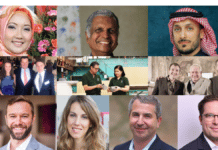
Since Cal Newport’s book, Deep Work: Rules for Focused Success in a Distracted World, the concept has become a focal point for corporations looking to leverage their human capital. The premise: high-quality work requires intent focus. This can mean creating a serene environment to work in; however, this is often not possible. Constant digital connection offers continuous distraction, and busy schedules frequently necessitate working on the go. Sometimes, tranquillity must come from within.
Deep work, on a more profound level, is the ability to cultivate a high level of personal focus, allowing for productivity even in distracting environments. As such, deep work is all about the self, which is where mindfulness comes into play. The capacity to slow down, concentrate, relax and stay calm irrespective of the environment is a learned skill. With appropriate training, this skill is a habit that produces results.
How to Use Mindfulness for Deep Work
Simply put, mindfulness means slowing down and becoming aware of the self by focusing on the body and the mind, which is why Google and SAP call it “Search Inside Yourself”. In the training programs they offer, the basic foundations of mindfulness are taught starting with:
- Empirical, scientific and clinical findings based on research in the area of mindfulness and stress reduction (why mindfulness affects your emotional intelligence, your work habits and your ability to interact with the people around you).
- Personal training and application of meditation methods, such as breath work and techniques to deal with constant thought intervention.
Mindfulness for a Healthy Corporate Mindset
Organisations are searching for new ways to encourage creativity. A culture of innovation is a strategic asset when it comes to ensuring sustainability. Since IBM’s 2010 CEO Study and the ongoing work of IDEO’s founders (prioritising creative confidence), creativity is quickly becoming the single most important competence moving forward.
Encouraging creativity first and foremost requires a culture of curiosity, openness, experimentalism and error tolerance. People are the carriers or ambassadors of culture. The question then remains, “How can organisations encourage a sustainable and self-developing corporate culture starting from the ground up?”
Google and SAP are answering this question with mindfulness training. Mindfulness reduces stress and enables non-reactive interactions in the workplace, allowing space for self-reflection and concentration on deep work. This environment sets the foundation for a vastly improved corporate culture, generating a positive feedback loop that improves effectiveness on long-term and strategic tasks. The organisation becomes more resilient on a collective level. When efficacy increases, a workforce becomes more content and less likely to leave. After all, completing tasks and seeing tangible results is crucial when it comes to satisfaction.
The First Steps
To start with, organisations must consider how their corporate culture can work to fulfil the company’s strategic goals. Identifying key challenges is integral to this process because an effective corporate strategy is designed to meet these challenges.
1. Develop a collective mindset framework
We suggest a dialogic approach. Mindset is a pattern but should not be fixed in every detail. The opportunity exists to use corporate mindset as a framework to establish communicative processes within the organisation. However, this does not mean that corporate mindset is negotiable. It is fixed in its core strategy alignment and is usually defined by executive management and then adapted by other levels of leadership, allowing for a measure of flexibility and specialisation. In other words, corporate mindset is best implemented by establishing a matrix based on its core elements and then enabling other levels of leadership to develop their own sub-items and applications for their departments and teams.
Openness, for example, can be expressed differently across the various divisions of a large organisation. The logistics department might find other expressions of openness (for example, more people-oriented) and applications (for example, more informal work for team culture) than the product management department. However, both will work on becoming more open to align with the mandate set out by the corporate mindset.
2. Develop mindfulness in individuals
Ideally, companies will offer mindfulness initiatives to leadership (as corporate culture needs role models) as well as to other employees on a broad level. This requires a significant investment of time and resources, which means leadership must first ideate a comprehensive plan to prioritise mindfulness and mindset.
3. Develop organisational mindfulness
There are several approaches to building resilience and mindfulness as a corporate initiative. Organisations can use open methods like “working out loud” to foster informal communication, open time resources for self-development and organisational learning.
Reconsidering the structure and role of meetings is another strategy to exercise mindfulness as an organisation. Meetings take the time of employees in leadership and administration roles but also act as the springboard for wider organisational improvement.
Additionally, groups can learn to build resiliency by understanding both system theoretical approaches, meaning the ability to see reality as an ongoing construction of communication and the “sensing” mode in the analysis of organisational behaviour itself.
One application is a “check-in and check-out” routine in the spirit of open communication. Other workplace routines such as “meerkat boards”, where teams will publicise indicators to identify dangerous developments, can also be considered organisational mindfulness.
4. Evaluation
Finally, systems for evaluation and supervision must be established in an approachable, practical manner. Organisations need to define key performance indicators and communicate with management and employees on an agreed schedule.
By definition, mindfulness on every level of an organisation requires a constant checking in with the self. In ascertaining and further developing what works, companies can maintain a constant level of improvement on every level, enjoy the self-perpetuating returns of a strong culture and concentrate on the deep work.










